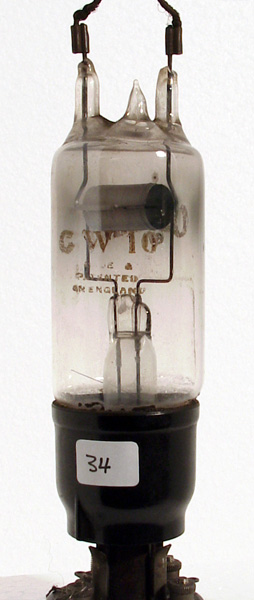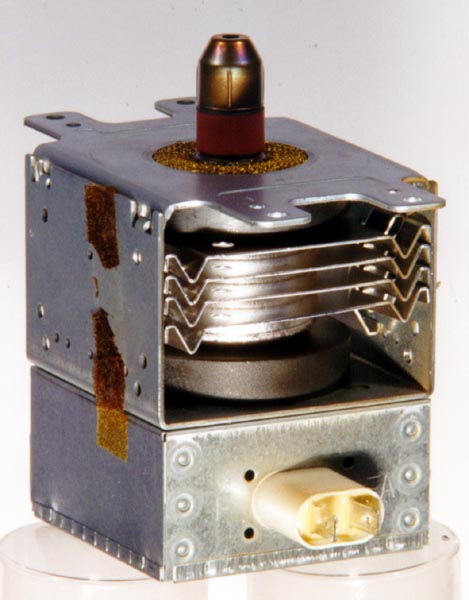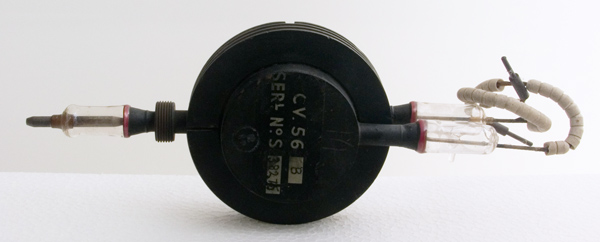|
A magnetron is a thermionic device where the flow of electrons from the hot cathode to the anode is regulated by magnetic rather than static forces. Thus electrically the magnetron is a diode. The article from Wireless World in 1933 100 metres and below illustrates the methods used for the generation of ultra-high frequency radio waves and the development of thinking that gave rise to the magnetron for this purpose.

The CW10 magnetron
The magnetron, as a generator of RF, developed as a low power low efficiency split anode diode with external magnetic field during the 1930s and was little used. It was the development in 1940 in England by Randall and Boot at Birmingham University of an efficient and stable resonant cavity magnetron that propelled the magnetron to the status of one of the mostly closely guarded secrets of the war. But the cavity magnetron was not new and had appeared as early as 1935 in Europe. These original cavity devices suffered from frequency drift and the German military chose not to adopt the device for developments in radio location (RADAR) and instead moved through the triodes developed by GEMA to the use of klystrons.
The Randall and Boot cavity magnetron enabled pulse powers of megawatts to be generated from a small valve and this allowed rapid development of RADAR (the now universally adopted American term for radio location) into all platforms ground, ship and airborne.
The first UK cavity magnetrons had the output power but suffered from frequency instability. To overcome this the transmitted pulse was sampled and this set the receive frequency.
Research showed that for stable operation each cavity needed to be 180° out of phase with its neighbour (π mode). Instability arose when different phase shifts existed between cavities eg 180° over three adjacent cavities. The answer was to use strapping across the cavities to tie every other cavity together. This not only increased stability but also output power by virtue of increased conversion efficiency. Initially ring strapping was employed but later it was found that stepped or echelon strapping reduced arcing between the rotating electron stream and the anode block and consequently increased the service life of the magnetron.
On the films DVD is a feature showing a reconstruction of the Randall and Boot experiments with the original equipment and demonstrated by the men themselves.

A domestic Oven magnetron
In 1946, by accident, researchers found that microwave energy heated food and this was refined into the microwave oven at a frequency around 2.4 GHz.
Early History
The following has been extracted from the Wikipedia article on magnetrons.
The first recorded two pole magnetron was developed by General Electric as part of an effort to exercise control of an electron stream that did not infringe the De Forest patents. This was work by Hull in 1920 (New York).
In 1924 Zácek (Prague) and Habann (Jena) independently discovered that the split anode magnetron could generate waves of 100 - 1,000 MHz.
An early multi-cavity version of the magnetron was reported in 1935 Ionescu (Bucharest) and patented independently the same year by Hollmann (Berlin)
Randall's first prototype multi cavity type appeared in 1937 and the Randall and Boot device followed in 1940.

CV56 1940s magnetron
|